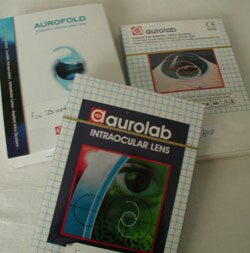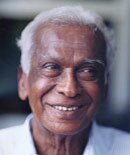|
From project concept to project completion, our approach builds off the best techniques of our mentors, partners, and founders. In our methodology we seek from the start to design and implement solutions to problems that will be sustainable based on earned income, and not dependent in future years on donations. Our approach incorporates the following elements:
Rather than the traditional philanthropic approach of donating medicines and medical devices to the developing world, Project Impact nurtures local self reliance and independence by establishing cutting edge manufacturing lines to produce high volumes of high quality medical products, and engages in development to make eye care locally self sustaining from user fees with a focus on the poor. Self financing manufacturing and service delivery have the obvious advantage of endurance over dependence on charity. Aurolab does not rely on any outside financial assistance to maintain its operations. This year, they are breaking ground for a new manufacturing facility as they have outgrown their current space.
Presently there are few examples of medical companies that maximize service rather than return on investment to shareholders. Aurolab, Lumbini, Aravind and other financially self sustaining programs demonstrate a unique and different economic paradigm embodying the concept of "compassionate enterprise." These programs are able to achieve profitability while serving the greater needs of humanity, most of whom are poor. It is hoped that these demonstrations will enable other medical companies and providers to understand how they too can control pricing and product distribution to poorer countries without jeopardizing pricing and profitability in higher income markets. By proving that markets exist in poorer countries, Project Impact creates a competitive environment for other companies to enter.
Project Impact’s starting point is the assumption that things don’t really cost that much to make. We then demystify the cost and technology by conducting feasibility studies. The next task is to find R&D people who have worked in leading companies and convince them to work with us. In our financial planning, we scale all start up, operating costs and margins to result in affordable pricing to end users (our start up costs are a fraction of what corporations usually spend for similar start ups). Another key aspect of this model is to use donated resources to pay for the start up and initial operating expenses for new social enterprise—this enables an operation to ‘have a running start’ without the burden of carrying debt in its start up phase. Finally, we gain control of technology, production, and distribution to ultimately control pricing to ensure affordability to our intended beneficiaries. Good quality at a price that is affordable to a broader segment of the population generates consumer demand that increases volume, leading to further reductions in unit costs as volumes rise.
Project Impact’s work embodies the economic paradigm of ‘compassionate capitalism’, emphasizes utilizing production capacity and surplus revenue to serve all economic strata, rich and poor alike, in a way that is both financially self-sustaining and affordable to all members of society. It is philanthropy bypassing the middleman. In this paradigm, profit is the MEANS to an END, not the other way around.
In our methodology, local ownership of resources and know-how for manufacturing and distribution, including ownership of revenue streams, are promoted. This strategy of ‘ethical globalization’, instead of transferring profitability to a few distant shareholders, places ownership locally, usually in ‘profitable’ non-profit entities so as to maximally benefit the growth and prosperity of local economies in developing countries, and to have profit margin fully recycled into expanding and improving social mission.
 Frequently high pricing, not high cost, makes medical technologies inaccessible in the developing world. Project Impact founder David Green has extensive experience in demystifying the cost structure of common medical technologies. For example, in the late 1980's, the primary barrier to making top quality cataract surgery available in India was the $300 price of intraocular lenses (IOLs). Then working through the Seva Foundation, David Green researched the cost structure of IOL production, and determined that top quality IOLs could be manufactured at only a small fraction of their $300 selling price. If an independent manufacturer of IOLs were able to match the costs of the competition but charge only a fraction of the price, they could create a self-sustaining business while making top quality ophthalmic technology globally affordable. In 1992, David and the Aravind Eye Care Sytem set up Aurolab for the purpose of manufacturing top quality PMMA IOLs at only a small fraction of the competition price. Today, their PMMA IOLs sell for under $10 each, making IOL surgery among the most cost effective and celebrated public health interventions worldwide. Frequently high pricing, not high cost, makes medical technologies inaccessible in the developing world. Project Impact founder David Green has extensive experience in demystifying the cost structure of common medical technologies. For example, in the late 1980's, the primary barrier to making top quality cataract surgery available in India was the $300 price of intraocular lenses (IOLs). Then working through the Seva Foundation, David Green researched the cost structure of IOL production, and determined that top quality IOLs could be manufactured at only a small fraction of their $300 selling price. If an independent manufacturer of IOLs were able to match the costs of the competition but charge only a fraction of the price, they could create a self-sustaining business while making top quality ophthalmic technology globally affordable. In 1992, David and the Aravind Eye Care Sytem set up Aurolab for the purpose of manufacturing top quality PMMA IOLs at only a small fraction of the competition price. Today, their PMMA IOLs sell for under $10 each, making IOL surgery among the most cost effective and celebrated public health interventions worldwide.
Project Impact matches industry quality and cost of goods through the consultation of top industry experts. In the case of suture production, via Seva Foundation, Rolf Spingler, the former head of R&D for US Surgical in Europe was engaged to develop suture manufacturing. By engaging experts who already have been successful in product and manufacturing development, we are able to decrease the amount of time and cost to develop products and manufacturing processes.
 |
|
Dr. Venkataswamy
|
Project Impact bases its pricing and distribution model on the spectacular success of Dr. Govindappa Venkataswamy and The Aravind Eye Care System. Performing over 200,000 eye surgeries per year, The Aravind Eye Care System is the highest throughput eye hospital system in the world. 47% of all Aravind patients pay nothing for their care; 18% pay below the cost of their care, and 35% pay well above cost. Nevertheless, the hospital earns surplus revenue each year which they reinvest to further build capacity. In addition to running Aravind's five hospitals in Tamil Nadu, the Aravind staff has helped to duplicate their model in over 150 other eye hospitals throughout Asia and Africa.
Project Impact aims to build upon the lessons of the Aravind Eye Care System and achieve financial sustainability through user fees on all of its projects. Like the Aravind Eye System, Project Impact uses a global multi-tiered pricing system, under which higher revenues earned from health care product and service delivery to wealthier countries cross-subsidize the price of service and product delivery to poorer countries. Like Aravind, Project Impact also employs a multi-tiered pricing model within a given regional market, to take advantage of variation in local paying capacity. This creates a system that is self-sustaining from user fees, while still affordable to all members of society. "Free" is our lowest price-- anyone who needs our products or services will receive them, regardless of ability to pay. This model capitalizes on income differences both between country markets and within country markets to make medical services available to the poor at an affordable price or at no charge. The methodology of multi-tiered pricing redresses the growing inequality in global income distribution and helps ameliorate poverty by making first-world technology affordable to developing economies to fulfill the very basic human needs to hear and see.
Project Impact broadens the geographical accessibility of its affordable technologies through a franchise of social entrepreneurs around the world. Using principles of ethical globalization, Project Impact gives local ownership to distribution partners around the world. Current partners for the distribution of the affordable hearing aid consist of existing non profit organizations working in the fields of health care, disability, and hearing impairment. Working with established organizations provides several advantages, including access to local expertise, faster market penetration, expanded reach to intended beneficiaries, increased job creation, and expansion of the project's ability to raise start-up funds from a broader base of stakeholders. Building this wider distribution base ensures that Project Impact meets the necessary high volume/low margin objectives.
|
